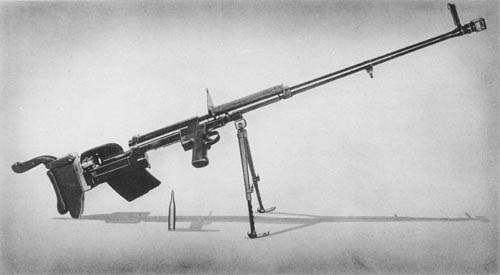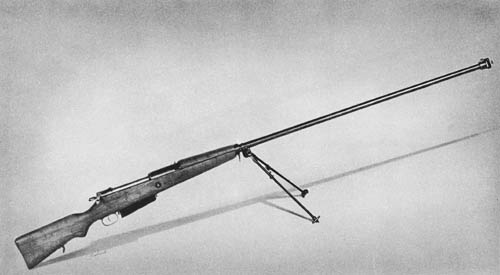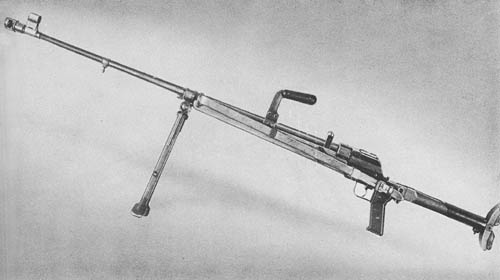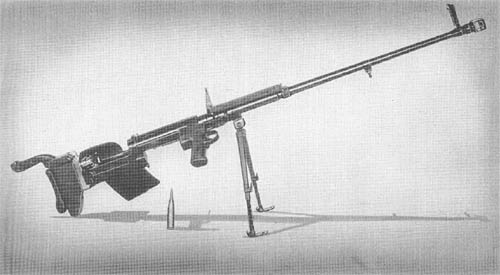
This antitank weapon, a manually operated, magazine-fed, air-cooled, high-velocity rifle which was standardized for production in 1941, fires the same necked-down cartridge as the Panzerbüchse 39. Although classified as an antitank rifle, the use of heavier armor on modern tanks has rendered the weapon effective against lightly-armored vehicles only.
A hinged bipod similar to that of the MG 34 is attached to the front of the receiver jacket. It folds forward for convenience in carrying. The gun is also equipped With carrying handle and sling; the former is fitted to the top of the barrel group, and the latter is attached on the right side at the bipod and back plate assembly.
A “U” type rear sight and an adjustable front sight of the square block type fold to the rear when not in use.
The gun is put in a “Safe” position by pulling the barrel housing lock extension 1/4-inch to the rear so that its rear alignment mark is aligned with the mark “S” on the barrel housing lock. When in this position, the trigger cannot be pulled, nor can the action be opened. If the trigger is pulled while the action is not entirely closed, the gun will not fire. It is necessary to release the trigger and pull it again in order to release the sear. When the magazine is empty, the action is kept open by the protrusion of the magazine follower which stops the rearward movement of the barrel housing.
SPECIFICATIONS
| Caliber | 7.92 mm (.312 in.) | |
| Weight (with empty magazine) | 29 3/4 lbs. | |
| Length (overall) | 59 1/4 ins. | |
| Sight radius | 30 15/16 ins. | |
| Principle of operation | Manually operated | |
| Feeding device | Magazine | |
| Capacity of feeding device | 6 rounds | |
| Cooling system | Air | |
| Ammunition types | 13 mm case necked down to 7.92 mm. Same as used in the PZ B39. See Page 211.) | |
| Rate of fire | ||
| Type of sight | “U” type rear sight; square block type front sight. | |
| Weight of barrel (w/ fittings) | 13 1/4 lbs. | |
| Length of barrel | 43 3/8 ins. | |
| Length of rifling | ||
| Rifling | ||
| Twist | R.H. | |
| Form | ||
| No. of grooves | 4 | |
| Depth of grooves | ||
| Width of grooves | ||
| Muzzle velocity (estimated) | 3,540 f/s | |
| Type of mount | Bipod |
German: p. 210.1


